Vodafone’s 4G Shared Rural Network Arrives in the Peak District

Mobile operator Vodafone UK has announced that their latest expansion of 4G based mobile (mobile broadband) coverage under the new £1bn Shared Rural Network (SRN) industry project has just gone live in the rural Peak District (Staffordshire) village of Longnor, which is home to over 330 people.
The industry-led scheme, which aims to help extend geographic 4G cover to 95% of the UK by the end of 2025 (supported by a public investment of £500m from the Government), essentially involves both the reciprocal sharing of existing masts in certain areas and the demand-led building and sharing of new masts in others between all four operators (Vodafone, Three UK, EE [BT] and O2).
The village of Longnor is only the second rural community to benefit from Vodafone’s own efforts under the SRN, with the first being Devauden in the Wye Valley of Wales. Sadly, we’ve yet to see any similar updates from the other operators, although having said that we would still much rather see a clear roll-out list than these piecemeal announcements.
Advertisement
Apparently, the deployment in this community was made possible by Vodafone agreeing to share one of O2’s existing masts (pictured), which probably wasn’t too much of a challenge since those two operators already have a network sharing agreement in place (this pre-dates the SRN). In short, locals now have a greater choice of operators.
Scott Petty, CTO of Vodafone UK, said:
“The cost of connecting rural hard-to-reach parts of the country has meant that some communities don’t have a choice of network providers. The Shared Rural Network initiative changes that.
We have been able to work closely with O2 to use their existing site to provide additional 4G coverage for Longnor. This will mean we can give people living and working in remote locations across the UK a choice of networks, and that a rural postcode is no longer a barrier to connectivity.”
The SRN’s approach means that operators can cut the cost of expanding coverage into rural areas, which will not only improve consumer choice but also help to increase general network coverage (mostly by building new masts). Meanwhile the SRN is being overseen by a jointly owned company called Digital Mobile Spectrum Limited, which all together claims it will “guarantee” coverage to 280,000 additional premises and 16,000km of roads.
All of these things sound good on paper, but in the past almost every new programme of rural mast building that we’ve ever seen has ultimately run into problems with cost, supply (power, fibre etc.), access (wayleaves) and local opposition to related planning applications for new infrastructure. We hope that the same issues don’t stall or delay the SRN but history tells us to be sceptical.
Many rural communities tend to cry out for mobile improvements, but at the same time not everybody wants to see the masts that need to be built. Unfortunately, you can’t have one without the other. However, some of these problems may well be tackled through the Government’s Mobile Planning Reforms.
Advertisement
Mark is a professional technology writer, IT consultant and computer engineer from Dorset (England), he also founded ISPreview in 1999 and enjoys analysing the latest telecoms and broadband developments. Find me on X (Twitter), Mastodon, Facebook, BlueSky, Threads.net and Linkedin.
« Survey Claims Two Thirds of Londoners Suffered Broadband Woes
ISP Vodafone UK Grows Fixed Broadband to 793,000 Customers »





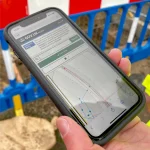

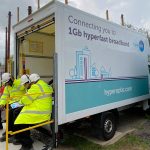

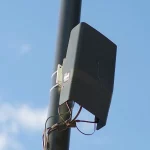

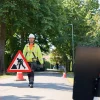

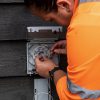








































I think that’s the most frustrating thing these days – so much opposition to masts at the planning permission stage yet the same people complain about poor mobile phone coverage.
That and the height of them being restricted. Fortunately this looks like it’ll be changing in the near future with planning regulations being eased across the UK.
I do wonder though, with the amount of “small impact” villages in rural communities seeing this type of thing. Are telco’s just using this as a SRN lark as a PR stunt to make them look good?
I think this because unless they have a nationwide approach to increasing mast infrastructure it’s but a drop in the ocean of what we really need outside major towns and cities.
Yes would be the answer. VF going onto a rural O2 tower using active RAN sharing is simple, where on this tower are the antenna for MBNL (EE and Three)? Is there any room for them?
Seems like Vodafone are the only ones pushing forward with this right now. I really want to see the other three MNOs take the opportunity to get more VoLTE coverage out there.
In reference to Devauden in the Wye Valley of Wales. I drove through the village last week. I’m impressed with the 4G coverage from Vodafone there & some surrounding areas. However the 20meter restrictions on hight can prove annoying. When leaving the village heading north east, it was up then down hill & signal quickly faded to 2G then nothing
‘Three’ has good coverage there with 3G-HSPA, no 4G data network & only one faint bar of VoLTE on the main road though the village.
Both masts stand right next to each other.
but this doesn’t this really achieve the stated Aim of increasing 4G coverage does it ? Unless the original operator hasn’t bothered upgrading the mast already.
Seems like it achieves boosting individual operators coverage stats provides choice to consumers and also potentially improves speeds due to lower user numbers per operator.
New shared masts and upgrading current ones to taller masts where worthwhile is whats needed.
As usual the statement from the operator that ‘rural postcodes aren’t a barrier to connectivity will ring hollow to those nearby that now have a choice of providers that theyre out of range from
This location looks close to the boundary between the O2 and Vodafone zones, but probably just inside the O2 zone. It’s definitely not in an unbundled area, so why didn’t it already have Vodafone B20?
Is the real story here that O2 still haven’t finished phase 1 of the Beacon mast sharing programme in their area, and have only just reached this mast?
Isn’t that area an AONB? Wonder what’s different in the Cotswolds, where a Telegraph pole 8m high is rejected as being ” out of character” next to existing Telegraph poles! Will take a lot of planting reforming to get a mast in my area, objections and council will find a way, getting a bit envious of these little villages with a few hundred population getting a good service, when the nimbys here stopping everything.
It’s generally 2-3 old people who have council power are the problem (the type who approve then speed bumps down your roads to discourage learner driver cars from going down “there” road)